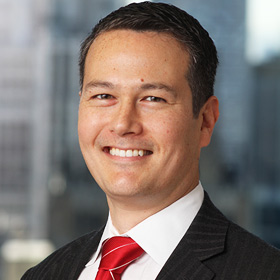What do you get when you actively manage passive ETFs? Richard Bernstein Advisors calls it "pactive" management and has found success with the strategy.
Pactive management believes in niche ETFs, though they can be volatile. And, it sees opportunities in short-duration bond ETFs as interest rates rise.
Henry Timmons, senior quantitative analyst for the firm, discussed these and other elements of the firm’s philosophy.
Wealth Management: What are the least publicized aspects of ETFs?
 Henry Timmons: What gets publicity a lot is scare tactics about what happens when things aren’t working in the market. But ETFs actually are a source of price information in times of stress. You can get trading done when there’s no price activity.
Henry Timmons: What gets publicity a lot is scare tactics about what happens when things aren’t working in the market. But ETFs actually are a source of price information in times of stress. You can get trading done when there’s no price activity.
At the end of 2015 when the high-yield bond market froze and several funds shut down, price information came from ETFs. That market was functioning in the way it should. HYG (iShares iBoxx High Yield Corporate Bond ETF) and JNK (SPDR Bloomberg Barclays High Yield Bond ETF) saw a lot of volume.
ETFs are a place you can go to trade when other markets are shut down. ETFs fulfill anything you might hope to achieve through traditional mutual funds.
That advantage can be a disadvantage—the ability to trade intraday. Late Vanguard founder John Bogle criticized that. Intraday trading could be a disadvantage to someone who doesn’t have the fortitude to manage how frequently they’re trading. For most players the ability to trade intraday is a benefit.
WM: What are the most-interesting current trends in the ETF business?
HT: There’s a continuing trend toward zero expenses. There’s also continuing growth in actively managed ETFs. It hasn’t really taken off in equity, but it’s more interesting in fixed income. That makes sense. There’s more outperformance for active management in fixed income than in equities. Do you fish where everyone else is or find another spot?
WM: Will the recent interest rate fluctuations hurt bond ETFs?
HT: You can play around with maturity, duration, credit risk and issuer risk. If you’re making a call you have to get that correct. Our view is that interest rates bottomed in June 2016, though recently yields have come in. We prefer as little duration as possible. We think duration is the biggest risk in portfolios.
WM: What do you think of smart beta ETFs?
HT: Smart beta is an easy way to categorize. What you’re trying to do is look at factor ETFs. For many customers, they serve a useful purpose. But for how we manage strategies, it’s not something we have used.
We use “pactive.” That’s the active management of passive funds. It’s the right tool for what we’re trying to achieve. If we do want factor exposure, we would look into what is the best ETF for the exposure we want. It’s a great tool. The cost to manage securities was previously high. Retail investors now have access to solutions that didn’t exist for them a decade ago.
WM: What’s your take on actively managed ETFs?
HT: As I mentioned, we use a pactive strategy. We’re not stock pickers. We’re global macro investors. We see where we want exposure and then find an ETF for that. Overall, we have successfully outperformed our benchmarks since starting the strategy in 2010. The intellectual research goes back decades with our founder Richard Bernstein.
WM: What’s your view of niche ETFs?
HT: Sometimes that works, and sometimes it doesn’t. We have made plays into emerging markets, specifically China. There are many different ways to play China. You can target all share classes and segments. It’s getting more attention. Some managers are expanding their suites. Once you figure out what exposure you want, you look for what’s available that fits your need.
WM: What do you say to those who criticize the concentration of stock ownership among ETFs?
HT: [On the plus side,] State Street put out a message last year to raise awareness of governance, [stating that 468 U.S. companies where it was a shareholder had no women directors.] After State Street voiced its concern, I think about 20 percent added at least one woman to their board.
Vanguard, State Street and BlackRock have significant leverage. I think each of these sponsors is trying to do the best they can.
WM: What do you think will be the most important future developments in the ETF world?
HT: I think it’s clear the mutual fund space will continue to struggle in the tug-of-war with ETFs over fund flows. The advantage of ETFs is becoming better known. The trend will be very low-cost products and higher-cost products. Low-cost provides passive exposure. Higher-cost offers niche exposure.
I also believe ESG will have rapid growth in the next couple years. It hasn’t quite taken off in the U.S., but it has in Europe. The trick is to see what the typical investor is seeking, because ESG is very broad. I don’t see it taking off next year, but soon.
Register now to attend the Inside ETFs Conference running from February 10-13.





